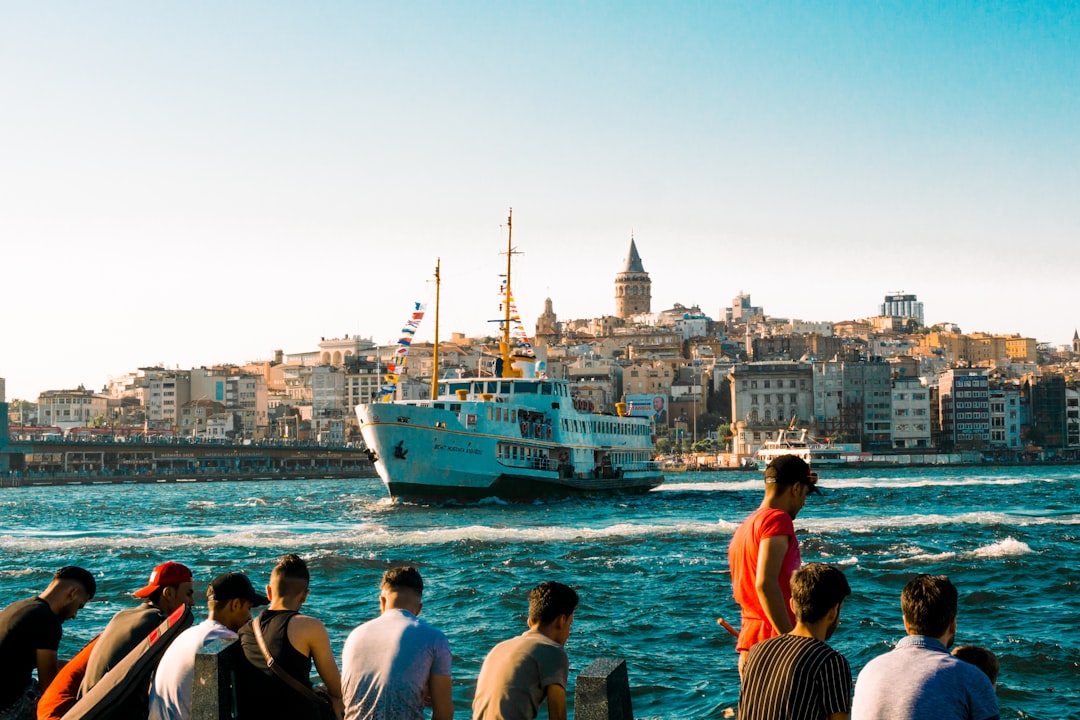A Critical Look at Exploring Turkey's Turquoise Coast Antalya to Bodrum in 10 Days
A Critical Look at Exploring Turkey's Turquoise Coast Antalya to Bodrum in 10 Days - Antalya - Gateway to Antiquity and Modernity
Beyond its historical allure, Antalya offers a diverse range of modern amenities and experiences, from stunning coastlines to vibrant nightlife and a thriving culinary scene.
Antalya - Gateway to Antiquity and Modernity
Antalya's Kaleiçi (Old Town) is a well-preserved example of Ottoman-era architecture, featuring historic buildings, narrow winding streets, and a picturesque harbor that transports visitors back in time.
The Antalya Museum houses one of the largest collections of Roman-era artifacts in Turkey, including the magnificent Sarcophagus of Weeping Women, a remarkable example of ancient Greek funerary art.
Antalya's Lara Beach, known for its fine white sand and crystal-clear waters, is one of the few nesting sites along the Turkish coast for the endangered loggerhead sea turtle (Caretta caretta).
The Düden Waterfalls, situated just outside the city, are fed by the Düden River and cascade over 40 meters (130 feet) into a deep, turquoise pool, creating a breathtaking natural spectacle.
Antalya's Konyaaltı Beach has been awarded the prestigious Blue Flag certification, recognizing its commitment to environmental sustainability and beach management excellence.
The city's Yivli Minare (Fluted Minaret), a landmark dating back to the 13th century, is an excellent example of Seljuk architectural style, featuring an intricate, vertically fluted design.
A Critical Look at Exploring Turkey's Turquoise Coast Antalya to Bodrum in 10 Days - Charming Seaside Towns - Kas and Oludeniz
The Turkish Riviera, also known as the Turquoise Coast, is home to charming seaside towns like Kas and Oludeniz.
Kas, a picturesque town in the Antalya Province, offers a blend of ancient history and modern amenities, with Greek architectural influences and a thriving culinary scene.
Kas is home to the largest population of endangered Caretta caretta sea turtles in the Mediterranean, with over 3,000 nesting sites along its coastline.
These ancient reptiles have been thriving in the region for over 100 million years.
The town of Kas is built on the ruins of the ancient Lycian city of Antiphellos, and many of the town's buildings incorporate remnants of the city's Greco-Roman heritage, including columns, archways, and stonework.
The Lycian Way, a 540-kilometer hiking trail that runs along the Turkish Riviera from Fethiye to Antalya, passes through both Kas and Oludeniz, offering trekkers stunning panoramic views of the coast and the opportunity to discover hidden coves and pristine beaches.
Oludeniz is home to the Belcekız Beach, which is known for its unique "blue lagoon" formation, a protected bay with crystal-clear turquoise waters that are separated from the open sea by a narrow strip of land, creating a natural swimming pool-like environment.
A Critical Look at Exploring Turkey's Turquoise Coast Antalya to Bodrum in 10 Days - Exploring Ancient Ruins - Xanthos-Letoon and Side
The ancient ruins of Xanthos-Letoon in southwest Turkey offer a fascinating glimpse into the Lycian civilization, with well-preserved architectural wonders and a rich history spanning centuries.
Despite ongoing archaeological work, the discovery and preservation of ancient mosaics, sarcophagi, and other artifacts continue to enhance the intrigue and significance of this remarkable archaeological complex.
The ancient city of Xanthos was once the capital of the Lycian civilization, a sophisticated culture that flourished in the Mediterranean region during the Iron Age.
Archaeologists have discovered that the Letoon sanctuary, situated near Xanthos, was a major religious center for the Lycians, with temples dedicated to the goddess Leto and her children, Apollo and Artemis.
The ruins at Xanthos-Letoon have revealed intricate mosaics and sarcophagi, showcasing the artistic prowess of the Lycian people and providing valuable insights into their funerary practices.
The site features a remarkably well-preserved Roman theater at Letoon, capable of seating over 4,000 people, indicating the cultural significance and sophistication of the ancient city.
Surprisingly, the excavations at Xanthos-Letoon have uncovered evidence of a Lycian writing system, which has helped scholars decipher the language and better understand the administrative and cultural practices of the region.
The ancient city of Side, located just a short distance from Xanthos-Letoon, was a major Greco-Roman port city and is known for its well-preserved ruins, including a grand temple dedicated to the goddess Athena.
Interestingly, the city of Side was home to one of the largest ancient slave markets in the Mediterranean, highlighting the complex economic and social dynamics of the region during antiquity.
Visitors to Xanthos-Letoon can explore the impressive Lycian rock-cut tombs, which feature intricate carvings and inscriptions, providing a glimpse into the funerary practices and beliefs of the Lycian people.
A Critical Look at Exploring Turkey's Turquoise Coast Antalya to Bodrum in 10 Days - Beachside Bliss - Turquoise Waters and Sandy Havens
The region is characterized by its clear, turquoise waters and sandy beaches, making it a quieter and more affordable option compared to other Mediterranean destinations.
The area offers a variety of activities, including sailing, hiking, and diving, in addition to the opportunity to explore ancient ruins along the coast.
The crystal-clear turquoise waters of the region are a result of the unique geological makeup, with the seafloor being composed primarily of limestone and dolomite, which reflects sunlight and gives the water its signature hue.
Patara Beach, stretching 12 kilometers along the coast, is the longest uninterrupted sandy beach in the Mediterranean, offering a perfect setting for beachgoers and water sports enthusiasts.
The town of Kas is home to the largest population of endangered Caretta caretta sea turtles in the Mediterranean, with over 3,000 nesting sites along its coastline, a testament to the region's ecological diversity.
The ancient Lycian people, who once inhabited the Turkish Riviera, developed a unique writing system that has been partially deciphered by archaeologists, shedding light on their sophisticated administrative and cultural practices.
The coastal city of Antalya, the capital of the Antalya Province, welcomed a record 6 million tourists in 2019, making it one of the most popular summer destinations in Turkey.
The Düden Waterfalls, located just outside of Antalya, cascade over 40 meters (130 feet) into a deep, turquoise pool, creating a breathtaking natural spectacle that attracts visitors from around the world.
The Turkish Riviera is home to the Mediterranean's largest coastal plain, offering vast stretches of sandy beaches and a unique geological landscape that has been shaped by the region's complex tectonic history.
A Critical Look at Exploring Turkey's Turquoise Coast Antalya to Bodrum in 10 Days - Culinary Delights - Savoring Local Flavors
The concept of "culinary delights" in this context emphasizes the importance of food in connecting with the local customs and people, offering a deeper understanding of the destination.
Dondurma, a unique Turkish ice cream made with the naturally thickening properties of salep (a powder derived from orchid tubers), is a specialty of the Bodrum Peninsula, offering a remarkably elastic and chewy texture.
The traditional Turkish meze dish of içli köfte, featuring a fried and stuffed bulgur wheat shell filled with minced meat, nuts, and spices, originated in the coastal town of Bodrum and is a must-try for culinary adventurers.
The Turquoise Coast is home to the production of Kekik, a locally harvested wild thyme variety that is used to flavor a range of regional dishes, from grilled meats to savory pies.
The town of Kas is known for its unique take on the traditional Turkish breakfast, featuring a spread of local cheeses, olive oils, and preserves, all sourced from the surrounding countryside.
Archaeologists have discovered evidence that the ancient Lycian civilization, which thrived in the region, practiced sophisticated fermentation techniques to produce a variety of alcoholic beverages, including a precursor to modern-day Turkish wine.
The coastal region is home to a thriving honey industry, with beekeepers producing a diverse array of honey varieties, including those infused with the nectar of the locally grown citrus fruits and wild herbs.
The Turquoise Coast is a prime location for the cultivation of the Memecik olive, a locally grown variety that is prized for its low bitterness and high oil content, making it a staple in the region's acclaimed Mediterranean cuisine.
A Critical Look at Exploring Turkey's Turquoise Coast Antalya to Bodrum in 10 Days - Budget-Friendly Adventures on the Turkish Riviera
The Turkish Riviera, also known as the Turquoise Coast, offers a budget-friendly adventure for travelers exploring the region from Antalya to Bodrum.
With charming seaside towns, ancient ruins, and stunning natural landscapes, the area provides a unique cultural experience without breaking the bank.
Visitors can take advantage of affordable accommodation options, public transportation, and local culinary delights to enjoy the beauty of the Turkish Riviera without excessive costs.
The Turkish Riviera is home to the largest population of endangered Caretta caretta sea turtles in the Mediterranean, with over 3,000 nesting sites along the Kas coastline.
Archaeologists have discovered evidence of a sophisticated Lycian writing system at the ancient ruins of Xanthos-Letoon, providing valuable insights into the administrative and cultural practices of this bygone civilization.
The crystal-clear turquoise waters of the Turkish Riviera are a result of the unique geological makeup of the seafloor, which is primarily composed of limestone and dolomite, reflecting sunlight and giving the water its signature hue.
Patara Beach, stretching 12 kilometers along the coast, is the longest uninterrupted sandy beach in the Mediterranean, offering a perfect setting for beachgoers and water sports enthusiasts.
Dondurma, a unique Turkish ice cream made with the naturally thickening properties of salep (a powder derived from orchid tubers), is a specialty of the Bodrum Peninsula, offering a remarkably elastic and chewy texture.
Archaeologists have discovered evidence that the ancient Lycian civilization practiced sophisticated fermentation techniques to produce a variety of alcoholic beverages, including a precursor to modern-day Turkish wine.
The coastal region is home to a thriving honey industry, with beekeepers producing a diverse array of honey varieties, including those infused with the nectar of the locally grown citrus fruits and wild herbs.
The Turquoise Coast is a prime location for the cultivation of the Memecik olive, a locally grown variety that is prized for its low bitterness and high oil content, making it a staple in the region's acclaimed Mediterranean cuisine.
The ancient city of Side, located near the Xanthos-Letoon ruins, was a major Greco-Roman port city and is known for its well-preserved ruins, including a grand temple dedicated to the goddess Athena.
The Düden Waterfalls, located just outside of Antalya, cascade over 40 meters (130 feet) into a deep, turquoise pool, creating a breathtaking natural spectacle that attracts visitors from around the world.
The coastal city of Antalya, the capital of the Antalya Province, welcomed a record 6 million tourists in 2019, making it one of the most popular summer destinations in Turkey.


